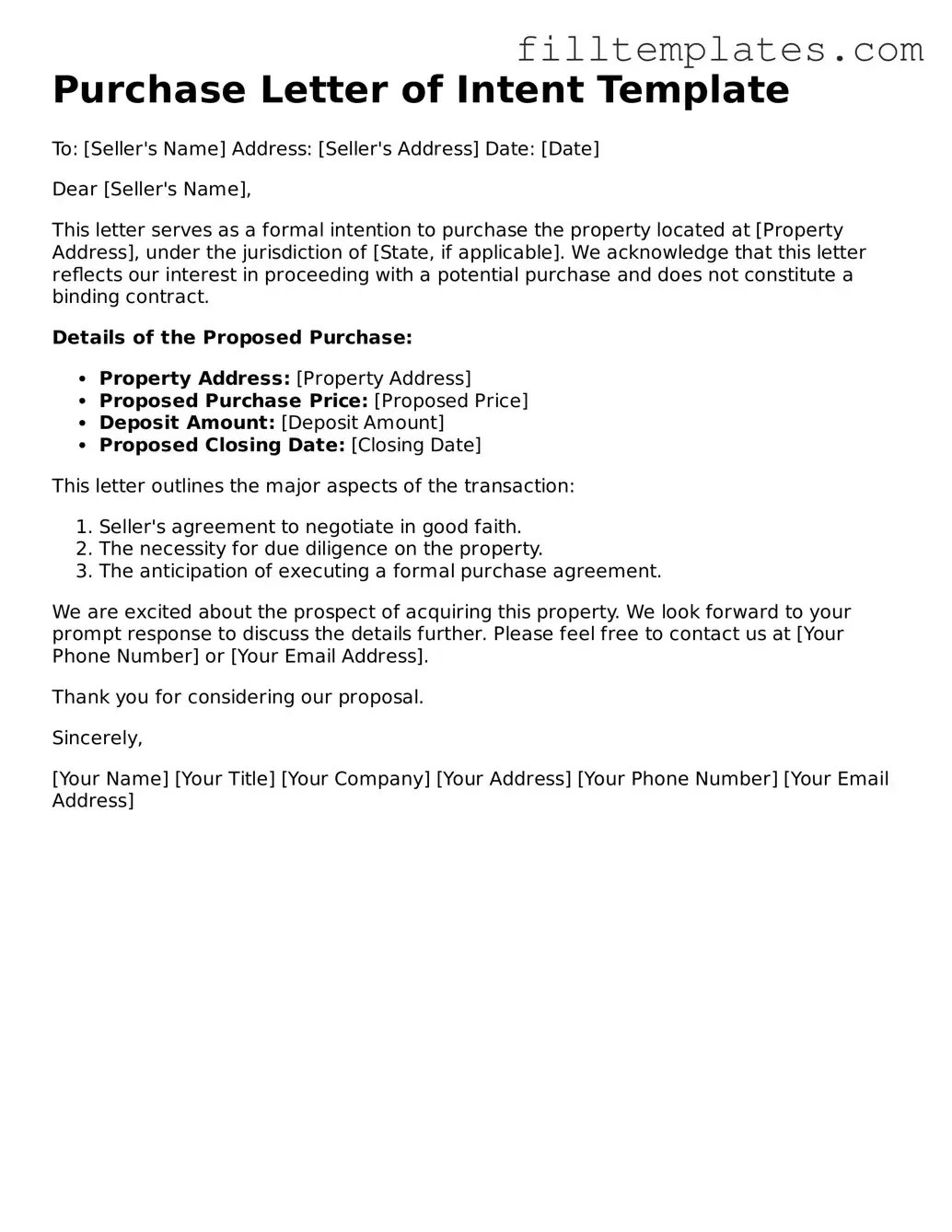Purchase Letter of Intent Template
To: [Seller's Name]
Address: [Seller's Address]
Date: [Date]
Dear [Seller's Name],
This letter serves as a formal intention to purchase the property located at [Property Address], under the jurisdiction of [State, if applicable]. We acknowledge that this letter reflects our interest in proceeding with a potential purchase and does not constitute a binding contract.
Details of the Proposed Purchase:
- Property Address: [Property Address]
- Proposed Purchase Price: [Proposed Price]
- Deposit Amount: [Deposit Amount]
- Proposed Closing Date: [Closing Date]
This letter outlines the major aspects of the transaction:
- Seller's agreement to negotiate in good faith.
- The necessity for due diligence on the property.
- The anticipation of executing a formal purchase agreement.
We are excited about the prospect of acquiring this property. We look forward to your prompt response to discuss the details further. Please feel free to contact us at [Your Phone Number] or [Your Email Address].
Thank you for considering our proposal.
Sincerely,
[Your Name]
[Your Title]
[Your Company]
[Your Address]
[Your Phone Number]
[Your Email Address]
